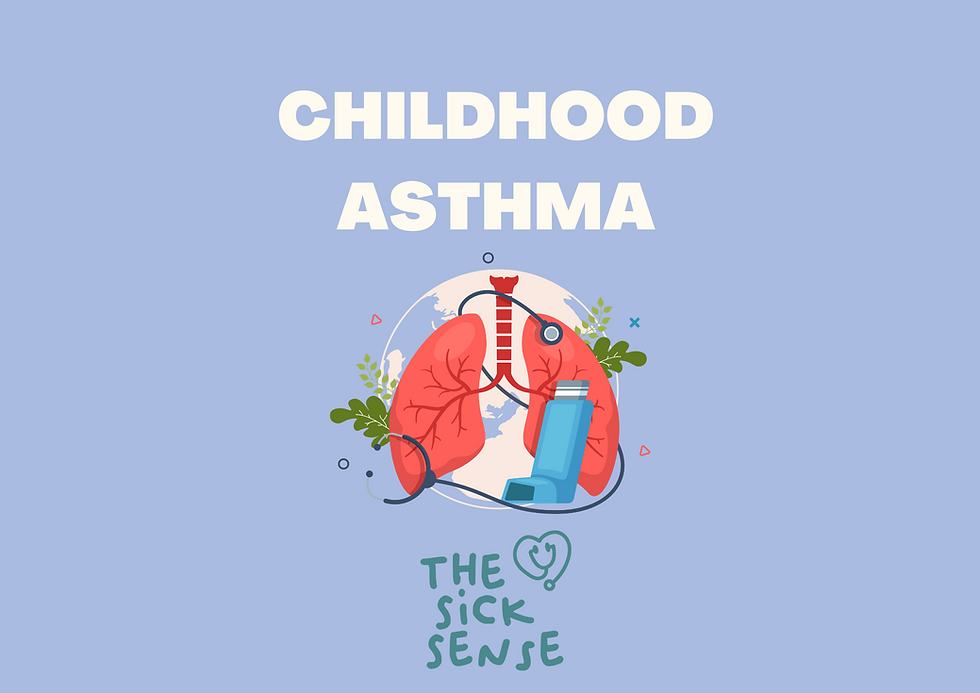Essential First Aid Steps for Childhood Asthma Attacks
- info9407830
- Mar 25
- 2 min read

Understanding Childhood Asthma and Common Triggers
Asthma affects the airways, making them inflamed and sensitive. When triggered, these airways tighten and swell, making it difficult for a child to breathe. While each child’s asthma is unique, some common triggers include:
Respiratory infections, like colds or the flu
Exercise, particularly in cold or dry air
Allergens, such as pollen, dust mites, mould, and pet dander
Weather changes, like cold air or sudden temperature drops
Smoke, strong smells, or air pollution
Stress or strong emotions
It’s important for families to work with their healthcare provider to identify specific triggers and create an Asthma Action Plan. This plan helps guide day-to-day care and explains exactly what to do if symptoms worsen.
How to Recognise an Asthma Attack
Asthma symptoms can build slowly or come on suddenly. Signs that your child may be having an asthma attack include:
Persistent coughing or wheezing
Fast, shallow breathing
Complaints of chest tightness or feeling like they can't get enough air
Struggling to speak or complete sentences
Nostrils flaring or sucking in at the ribs and neck when breathing
Looking pale or even bluish around the lips
These signs mean your child needs help immediately.
What to Do During an Asthma Attack
If your child is having an asthma attack, follow these key steps:
Help them sit upright
Encourage your child to stay calm and seated. Avoid lying down, as this can make breathing more difficult.
Follow their Asthma Action Plan
If your child has a personalised Asthma Action Plan from their doctor, follow the steps outlined.
OR
If you're unsure or don't have an Action Plan available, use the 4x4x4 method:
Shake the reliever puffer (usually blue or grey).
Give 4 separate puffs, with 1 puff at a time.
After each puff, have your child take 4 slow breaths using a spacer if you have one.
Wait 4 minutes
Monitor your child's breathing. If there’s no improvement, give another 4 puffs following the same method.
Call Triple Zero (000)If symptoms do not improve or get worse, call 000 for an ambulance straight away.
Continue giving 4 puffs every 4 minutes
Keep repeating the 4x4x4 Asthma First Aid method until help arrives.
Written by
Ilana Haseltine Lawrence – RN, MN (Adv Prac Paeds), ACN Cert Immunisation, RTO (AHETI), TAE40122 - Cert IV in Training & Assessment.
Reviewed by
Dr Samual Heitner - Paediatrician, Paediatric Emergency Consultant, Founder - Telebaby, FRACP.




Comments